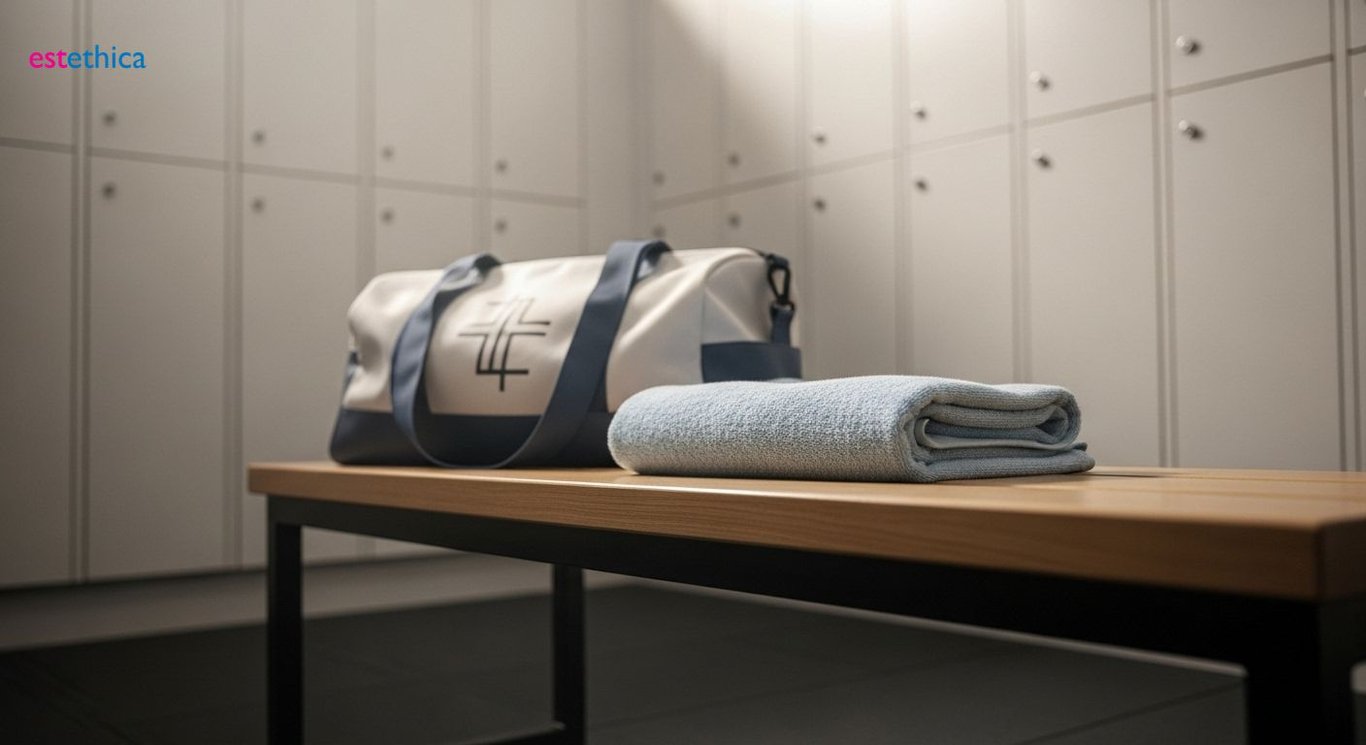Unmasking Gynecomastia: Causes, Solutions & Lasting Confidence
Discover comprehensive insights into gynecomastia, its causes and treatments, and regain lasting confidence.
Experiencing unexpected changes in your body can be distressing, especially when it comes to conditions like gynecomastia, often colloquially known as 'man boobs.' This condition is more common than you might think, affecting a sizable portion of the male population. In this comprehensive guide, we aim to unravel the complexities behind male breast enlargement, distinguishing between gynecomastia and pseudogynecomastia, and exploring effective solutions ranging from lifestyle changes to surgical interventions. Read on to discover how understanding gynecomastia can lead to lasting confidence and well-being.
Decoding Male Breast Enlargement: What's Causing Your Man Boobs?
Understanding the Underlying Causes of Gynecomastia
Gynecomastia, characterized by male breast enlargement, is often triggered by a complex interplay of hormonal imbalances. Increased estrogen levels relative to testosterone can stimulate breast tissue growth. Medications, such as certain antidepressants, antibiotics, and anabolic steroids, may also bring about this condition as a side effect.
Furthermore, underlying health conditions like liver disease and kidney failure can disrupt hormonal balance and lead to gynecomastia. In some cases, it is observed during puberty or in older men due to natural hormonal changes. Identifying these causes is crucial for devising an effective management plan.
- Hormonal Fluctuations: Imbalances between estrogen and testosterone levels, particularly an increase in estrogen relative to testosterone, can trigger the development of gynecomastia.
- Medication Side Effects: Certain medications, including some antidepressants, anti-ulcer drugs, and anabolic steroids, may cause gynecomastia as a side effect, disrupting hormonal balance and stimulating breast tissue growth.
- Underlying Health Conditions: Various medical conditions, such as liver disease, kidney failure, and thyroid disorders, can disrupt hormonal regulation and contribute to the appearance of enlarged male breasts.
Exploring Factors Contributing to Male Breast Enlargement
Enlarged male breasts, commonly referred to as "man boobs", can also result from factors beyond hormonal imbalances. In some instances, excess fat accumulation in the chest area, known as pseudogynecomastia, contributes to the appearance of breast enlargement. Lifestyle factors, such as poor diet and lack of exercise, can exacerbate this condition.
- Excess Fat Accumulation: Pseudogynecomastia, or the accumulation of excess fat in the chest area, can create the appearance of enlarged breasts in men, often linked to obesity or weight gain.
- Genetic Predisposition: A family history of gynecomastia may increase the likelihood of developing the condition, suggesting a genetic component in some cases.
- Age-Related Changes: Natural hormonal shifts that occur with aging can lead to decreased testosterone levels and increased estrogen, contributing to the development of enlarged male breasts in older individuals.
Furthermore, certain medical treatments, such as radiation therapy and chemotherapy, can trigger hormonal imbalances and lead to gynecomastia. Recognizing these diverse causes is essential for accurate diagnosis and tailored treatment strategies. Effective management begins with identifying and addressing the factors contributing to enlarged male breasts.

Gynecomastia vs. Pseudogynecomastia: Identifying the Real Issue
Distinguishing Gynecomastia from Pseudogynecomastia
Gynecomastia involves the enlargement of breast glandular tissue due to hormonal imbalances. This condition results in a firm, rubbery mass that can be felt beneath the nipple. On the other hand, pseudogynecomastia is characterized by the accumulation of fat in the chest area, leading to a softer, less defined appearance.
One key distinction lies in the tissue composition: gynecomastia involves actual glandular growth, while pseudogynecomastia is primarily fat deposition. Differentiating between the two is essential for proper diagnosis and appropriate treatment. An examination, may include a physical evaluation and possibly imaging tests.
- Glandular Tissue vs. Fat: Gynecomastia involves the growth of breast glandular tissue, creating a firm mass. Pseudogynecomastia is characterized by fat accumulation, creating a softer appearance.
- Physical Examination: A healthcare provider can often distinguish between the two through a physical examination, feeling for the presence of glandular tissue or assessing fat distribution.
- Hormonal Evaluation: Gynecomastia is frequently associated with hormonal imbalances, while pseudogynecomastia may not involve hormonal factors, aiding in the differential diagnosis.
Diagnostic Approaches for Accurate Identification
Accurate diagnosis is crucial for determining the appropriate course of action. Diagnostic methods may include a thorough medical history, physical examination, and hormone level assessments. Imaging techniques, such as mammography or ultrasound, can help visualize the breast tissue and differentiate between glandular and fatty components.
- Medical History Evaluation: Gathering information about medications, medical conditions, and family history can give important details for distinguishing between gynecomastia and pseudogynecomastia.
- Palpation and Physical Exam: A physical examination wherein the doctor palpates the breast tissue to evaluate its texture and consistency. This method is helpful to differentiate between enlarged male breasts.
- Imaging Studies: Ultrasound or mammography can provide detailed images of the breast tissue, helping to identify the presence of glandular tissue or fat deposits.
These diagnostic tools are vital in guiding treatment decisions, ensuring that individuals receive the most effective and targeted care for their specific condition. A precise diagnosis ensures that treatment strategies are tailored to address the root cause of the issue, whether it's hormonal imbalance or excess fat accumulation as the cause of man boobs.

Beyond the Gym: Effective Strategies for Male Breast Reduction
Targeted Treatments for Gynecomastia
While regular exercise and a healthy diet are beneficial in reducing body fat and can improve overall body composition, they might not be sufficient for addressing gynecomastia, especially when it involves glandular tissue growth. In such instances, more targeted treatments become essential to achieve noticeable results.
Medical treatments, such as medications that help balance hormones and reduce male breast enlargement, can be considered. Additionally, for persistent cases, gynecomastia surgery may offer a more definitive remedy by removing excess glandular tissue and fat. These surgical procedures can provide a more sculpted and masculine chest contour.
- Medications: Certain medications can help balance hormone levels, reducing the growth of glandular tissue and alleviating gynecomastia symptoms.
- Liposuction: This procedure removes excess fat from the chest area, helping to reduce the appearance of enlarged male breasts, especially in cases of pseudogynecomastia.
- Glandular Tissue Excision: Surgical removal of excess glandular tissue can provide a more permanent solution for gynecomastia, resulting in a flatter and more contoured chest.
Exploring Surgical Options for Male Breast Reduction
For individuals seeking a more definitive solution, surgical options such as liposuction and glandular tissue excision can be highly effective. Liposuction is particularly beneficial for addressing pseudogynecomastia. It removes excess fat deposits, while glandular tissue excision targets the underlying glandular tissue contributing to the breast enlargement.
- Liposuction Techniques: Techniques such as Tumescent liposuction, which involves injecting a saline solution with local anesthesia and epinephrine, followed by the removal of fat through small incisions are used.
- Surgical Excision: Direct removal of glandular tissue and excess skin, often necessary when gynecomastia involves significant glandular enlargement or skin laxity, ensuring precision and optimal aesthetic results.
- Combination Approaches: Combining liposuction with glandular tissue excision, which addresses both excess fat and glandular tissue, providing a comprehensive solution for more complex cases of gynecomastia and a contoured chest, that helps to reduce the appearance of man boobs.
These surgical interventions are frequently performed by skilled surgeons at estethica, ensuring personalized care and optimal outcomes. At estethica, detailed consultations help determine the most appropriate surgical approach for each patient, also considering that the cost of gynecomastia surgery may vary.

The Gynecomastia Surgery Journey: Recovery and Renewed Self-Esteem
What to Expect After Gynecomastia Surgery
The recovery period following gynecomastia surgery is a crucial phase focused on healing and achieving the desired aesthetic outcome. Modern surgical techniques prioritize minimal scarring and reduced recovery times. Immediately after the procedure, patients can expect some swelling and bruising, which gradually subside. Compression garments are typically worn to support the healing tissues and minimize swelling.
Pain management is a key aspect of the recovery process, with medication prescribed to alleviate discomfort. While individual experiences vary, most patients can return to light activities within a few days, with a gradual return to more strenuous activities over several weeks. The goal is to restore not only physical aesthetics but also renewed self-esteem.
- Reduced Swelling: Post-operative swelling gradually subsides over several weeks, revealing the improved chest contour.
- Minimal Scarring: Advanced surgical techniques minimize scarring, resulting in aesthetically pleasing outcomes.
- Pain Management: Effective pain management protocols ensure patient comfort throughout the recovery period.
Regaining Confidence and Improving Physical Aesthetics
Many individuals experience a significant boost in self-esteem following male breast reduction. Correcting the enlarged male breasts allows patients to feel more comfortable and confident in their appearance. The psychological benefits of achieving a more masculine chest contour can be transformative.
- Improved Body Image: The surgery enhances body contours, leading to a more proportionate and aesthetically pleasing physique.
- Enhanced Self-Esteem: Regaining a more masculine chest contour boosts self-confidence and overall quality of life.
- Increased Comfort: Patients often report feeling more comfortable in clothing and during physical activities.
The journey towards renewed self-esteem is supported by the skilled medical team at estethica, ensuring a positive and empowering experience. estethica provides comprehensive support and guidance, helping patients navigate the recovery process and achieve their desired aesthetic goals, enabling them to embrace life with newfound confidence.
Understanding Gynecomastia: Causes, Symptoms, and Treatments
Advanced Liposuction and Excision Techniques for Optimal Gynecomastia Correction
estethica specializes in advanced liposuction and glandular tissue excision techniques for gynecomastia, ensuring personalized treatment plans. Specific methods, such as tumescent liposuction involving saline solution injection, are performed by skilled surgeons to minimize scarring and optimize chest contouring for effective male breast reduction.
estethica’s surgeons possess extensive experience in performing both liposuction and glandular tissue excision, delivering comprehensive gynecomastia solutions. The medical team conducts detailed consultations to determine the most appropriate surgical approach, considering individual patient needs and anatomical factors for tailored care.
Comprehensive Pre- and Post-operative Support Ensures Positive Gynecomastia Surgery Experience
estethica offers detailed pre-operative consultations and comprehensive post-operative support to ensure patient comfort and satisfaction throughout the gynecomastia surgery journey. Post-operative care includes pain management protocols and the use of compression garments to minimize swelling and support healing tissues.
Patients at estethica express high satisfaction with the aesthetic outcomes and renewed self-confidence achieved through gynecomastia surgery. The skilled medical team provides ongoing support and guidance, enabling patients to embrace life with newfound confidence after achieving their desired aesthetic goals.
Frequently Asked Questions
What are the primary causes of male breast enlargement (gynecomastia)?
How can I distinguish between gynecomastia and pseudogynecomastia?
What are the effective treatment options for gynecomastia?
What can I expect during the recovery period after gynecomastia surgery?
How does gynecomastia surgery improve self-esteem?
Achieve your aesthetic goals with estethica's expert surgical and medical treatments.
📞 Get Your Free Consultation!